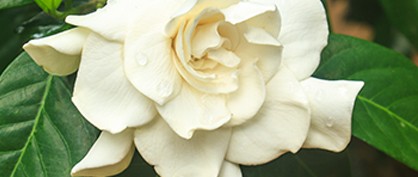Plants Are Expert Chemists, It’s in Their DNA
By Kylie Wolfe
When you admire a plant, you see beautiful colors and intricate shapes. What you don’t see are the secrets that lie beneath the surface, encouraging and discouraging visitors. Some plants taste bitter, keeping herbivores at bay. Others produce sweet nectar, attracting pollinators.
But plants have another unique superpower: they’re nature’s chemists. A study published in BMC Biology took a closer look at how a tropical shrub, known scientifically as Gardenia jasminoides, is capable of producing the chemical compound crocin.
Chemicals and Color
In plants, crocin contributes a deep red pigment. This is apparent in saffron and ripened gardenia fruits. As an antioxidant, the chemical is considered medically beneficial, so understanding how plants make it helps lay the groundwork for future manufacturing efforts.
To uncover this natural process, researchers first sequenced the genome of Gardenia jasminoides, something that hadn’t been done before. They determined which genes were involved in the chemical process and used their findings to synthesize crocin in a lab setting, just as the plants would do in the wild.
Replication that Reinvents
“The important principle is that plants can reinvent things,” study co-author Dr. Victor Albert told earth.com. “They can duplicate some parts of their genetic toolkit and twiddle the functions a little.”
This occurs as a result of tandem duplication, an accidental replication of a single gene that allows the plant to keep an original copy and make something new with the other. It’s like copying a key; instead of having two keys to the same door, plants can expand their capabilities by altering one key to be used in a different way.
Through evolution, the replicated DNA can mutate and give the plant new functions. It is this process, the study revealed, that gave gardenias the gene needed to synthesize crocin. Tandem duplication has also occurred in coffee plants, enabling the Coffea canephora to develop genes that produce caffeine.
Mutually Beneficial Adaptations
Though plants evolve to maintain their own survival, sometimes their adaptations are mutually beneficial. For the gardenia, the presence of crocin gives its fruit a bright, attractive coloring. This invites animals to consume the fruit and do the work of distributing seeds wherever their business takes them, expanding the species’ range.
Researchers found that the appearance of one new gene gave the gardenia the ability to produce crocin naturally. And by determining the exact pathway the plant uses, scientists now have the information needed to make it themselves.
Understanding this mechanism of evolution demonstrates the power of nature, how one plant can reuse already-existing genes to create something new. And that is a secret worth uncovering.
Discussion Questions
- What are a few ways plants silently communicate with their external environment?
- How does understanding plant chemistry help scientists in the lab?
- Look up other examples of tandem duplication. Why is this process beneficial?
Vocabulary
- Crocin
- Evolution
- Genome
- Synthesis
- Tandem duplication

